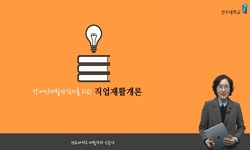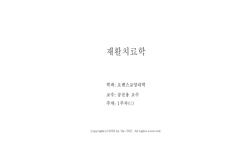Objective To evaluate the cardiovascular response during head-out water immersion, underwater treadmill gait, and land treadmill gait in stroke patients.Methods Ten stroke patients were recruited for underwater and land treadmill gait sessions. Each...
http://chineseinput.net/에서 pinyin(병음)방식으로 중국어를 변환할 수 있습니다.
변환된 중국어를 복사하여 사용하시면 됩니다.
- 中文 을 입력하시려면 zhongwen을 입력하시고 space를누르시면됩니다.
- 北京 을 입력하시려면 beijing을 입력하시고 space를 누르시면 됩니다.
https://www.riss.kr/link?id=A101634685
- 저자
- 발행기관
- 학술지명
- 권호사항
-
발행연도
2014
-
작성언어
English
- 주제어
-
등재정보
KCI등재,SCOPUS
-
자료형태
학술저널
- 발행기관 URL
-
수록면
628-636(9쪽)
-
KCI 피인용횟수
2
- 제공처
- 소장기관
-
0
상세조회 -
0
다운로드
부가정보
다국어 초록 (Multilingual Abstract)
Objective To evaluate the cardiovascular response during head-out water immersion, underwater treadmill gait, and land treadmill gait in stroke patients.Methods Ten stroke patients were recruited for underwater and land treadmill gait sessions. Each session was 40 minutes long; 5 minutes for standing rest on land, 5 minutes for standing rest in water or on treadmill, 20 minutes for treadmill walking in water or on land, 5 minutes for standing rest in water or on treadmill, and 5 minutes for standing rest on land. Blood pressure (BP) and heart rate (HR) were measured during each session. In order to estimate the cardiovascular workload and myocardial oxygen demand, the rate pressure product (RPP) value was calculated by multiplying systolic BP (SBP) by HR. Results SBP, DBP, mean BP (mBP), and RPP decreased significantly after water immersion, but HR was unchanged. During underwater and land treadmill gait, SBP, mBP, DBP, RPP, and HR increased. However, the mean maximum increases in BP, HR and RPP of underwater treadmill walking were significantly lower than that of land treadmill walking.Conclusion Stroke patients showed different cardiovascular responses during water immersion and underwater gait as opposed to standing and treadmill-walking on land. Water immersion and aquatic treadmill gait may reduce the workload of the cardiovascular system. This study suggested that underwater treadmill may be a safe and useful option for cardiovascular fitness and early ambulation in stroke rehabilitation.
참고문헌 (Reference)
1 Newman AB, "Walking performance and cardiovascular response: associations with age and morbidity: the Health, Aging and Body Composition Study" 58 : 715-720, 2003
2 Wade DT, "Walking after stroke: measurement and recovery over the first 3 months" 19 : 25-30, 1987
3 Razminia M, "Validation of a new formula for mean arterial pressure calculation: The new formula is superior to the standard formula" 63 : 419-425, 2004
4 Billinger SA, "Use of Doppler ultrasound to assess femoral artery adaptations in the hemiparetic limb in people with stroke" 27 : 552-558, 2009
5 Ivey FM, "Unilateral impairment of leg blood flow in chronic stroke patients" 18 : 283-289, 2004
6 Macko RF, "Treadmill training improves fitness reserve in chronic stroke patients" 82 : 879-884, 2001
7 Macko RF, "Treadmill exercise rehabilitation improves ambulatory function and cardiovascular fitness in patients with chronic stroke: a randomized, controlled trial" 36 : 2206-2211, 2005
8 Kingma B, "The thermoneutral zone: implications for metabolic studies" 4 : 1975-1985, 2012
9 Gobel FL, "The rate pressure product as an index of myocardial oxygen consumption during exercise in patients with angina pectoris" 57 : 549-556, 1978
10 Kim CM, "Symmetry in vertical ground reaction force is accompanied by symmetry in temporal but not distance variables of gait in persons with stroke" 18 : 23-28, 2003
1 Newman AB, "Walking performance and cardiovascular response: associations with age and morbidity: the Health, Aging and Body Composition Study" 58 : 715-720, 2003
2 Wade DT, "Walking after stroke: measurement and recovery over the first 3 months" 19 : 25-30, 1987
3 Razminia M, "Validation of a new formula for mean arterial pressure calculation: The new formula is superior to the standard formula" 63 : 419-425, 2004
4 Billinger SA, "Use of Doppler ultrasound to assess femoral artery adaptations in the hemiparetic limb in people with stroke" 27 : 552-558, 2009
5 Ivey FM, "Unilateral impairment of leg blood flow in chronic stroke patients" 18 : 283-289, 2004
6 Macko RF, "Treadmill training improves fitness reserve in chronic stroke patients" 82 : 879-884, 2001
7 Macko RF, "Treadmill exercise rehabilitation improves ambulatory function and cardiovascular fitness in patients with chronic stroke: a randomized, controlled trial" 36 : 2206-2211, 2005
8 Kingma B, "The thermoneutral zone: implications for metabolic studies" 4 : 1975-1985, 2012
9 Gobel FL, "The rate pressure product as an index of myocardial oxygen consumption during exercise in patients with angina pectoris" 57 : 549-556, 1978
10 Kim CM, "Symmetry in vertical ground reaction force is accompanied by symmetry in temporal but not distance variables of gait in persons with stroke" 18 : 23-28, 2003
11 Billinger SA, "Single limb exercise induces femoral artery remodeling and improves blood flow in the hemiparetic leg poststroke" 40 : 3086-3090, 2009
12 Epstein M, "Renal effects of head-out water immersion in humans: a 15-year update" 72 : 563-621, 1992
13 Gauer OH, "Recent advances in the physiology of whole body immersion" 2 : 31-39, 1975
14 Gabrielsen A, "Neuroendocrine and renal effects of intravascular volume expansion in compensated heart failure" 281 : R459-R467, 2001
15 Iellamo F, "Neural mechanisms of cardiovascular regulation during exercise" 90 : 66-75, 2001
16 Landin S, "Muscle metabolism during exercise in hemiparetic patients" 53 : 257-269, 1977
17 Gleim GW, "Metabolic costs and heart rate responses to treadmill walking in water at different depths and temperatures" 17 : 248-252, 1989
18 Olney SJ, "Mechanical energy of walking of stroke patients" 67 : 92-98, 1986
19 Boussuges A, "Immersion in thermoneutral water: effects on arterial compliance" 77 : 1183-1187, 2006
20 Arborelius M Jr, "Hemodynamic changes in man during immersion with the head above water" 43 : 592-598, 1972
21 Roth EJ, "Hemiplegic gait: relationships between walking speed and other temporal parameters" 76 : 128-133, 1997
22 von Schroeder HP, "Gait parameters following stroke: a practical assessment" 32 : 25-31, 1995
23 Wall JC, "Gait asymmetries in residual hemiplegia" 67 : 550-553, 1986
24 MacKay-Lyons MJ, "Exercise capacity and cardiovascular adaptations to aerobic training early after stroke" 12 : 31-44, 2005
25 Thompson PD, "Exercise and acute cardiovascular events placing the risks into perspective:a scientific statement from the American Heart Association Council on Nutrition, Physical Activity, and Metabolism and the Council on Clinical Cardiology" 115 : 2358-2368, 2007
26 Hayashi T, "Exclusion of influence of physical activity on ambulatory blood pres sure" 29 : 23-30, 2007
27 Grysiewicz RA, "Epidemiology of ischemic and hemorrhagic stroke: incidence, prevalence, mortality, and risk factors" 26 : 871-895, 2008
28 Silver KH, "Effects of aerobic treadmill training on gait velocity, cadence, and gait symmetry in chronic hemiparetic stroke: a preliminary report" 14 : 65-71, 2000
29 Simmons V, "Effectiveness of water exercise on postural mobility in the well elderly: an experimental study on balance enhancement" 51 : M233-M238, 1996
30 Patterson SL, "Effect of treadmill exercise training on spatial and temporal gait parameters in subjects with chronic stroke: a preliminary report" 45 : 221-228, 2008
31 Patterson SL, "Determinants of walking function after stroke: differences by deficit severity" 88 : 115-119, 2007
32 Mourot L, "Cardiovasuculr autonomic control during short-term thermoneutral and cool head-out immersion" 79 : 14-20, 2008
33 Asahina M, "Cardiovascular response during aquatic exercise in patients with osteoarthritis" 98 : 731-735, 2010
34 Park KS, "Cardiovascular regulation during water immersion" 18 : 233-242, 1999
35 Hall J, "Cardiorespiratory responses to underwater treadmill walking in healthy females" 77 : 278-284, 1998
36 Kelly JO, "Cardiorespiratory fitness and walking ability in subacute stroke patients" 84 : 1780-1785, 2003
37 Bates A, "Aquatic exercise therapy" Saunders 1996
38 Ada L, "A treadmill and overground walking program improves walking in persons residing in the community after stroke: a placebo-controlled, randomized trial" 84 : 1486-1491, 2003
동일학술지(권/호) 다른 논문
-
- 대한재활의학회
- 김진환
- 2014
- KCI등재,SCOPUS
-
Effect of Low-Frequency rTMS and NMES on Subacute Unilateral Hemispheric Stroke With Dysphagia
- 대한재활의학회
- 임길병
- 2014
- KCI등재,SCOPUS
-
Comparison of the Effects of 1 Hz and 20 Hz rTMS on Motor Recovery in Subacute Stroke Patients
- 대한재활의학회
- 김철
- 2014
- KCI등재,SCOPUS
-
- 대한재활의학회
- 서미리
- 2014
- KCI등재,SCOPUS
분석정보
인용정보 인용지수 설명보기
학술지 이력
| 연월일 | 이력구분 | 이력상세 | 등재구분 |
|---|---|---|---|
| 2023 | 평가예정 | 해외DB학술지평가 신청대상 (해외등재 학술지 평가) | |
| 2020-01-01 | 평가 | 등재학술지 유지 (해외등재 학술지 평가) |  |
| 2011-06-28 | 학술지명변경 | 한글명 : 대한재활의학회지 -> Annals of Rehabilitation Medicine |  |
| 2011-01-01 | 평가 | 등재학술지 유지 (등재유지) |  |
| 2009-01-01 | 평가 | 등재학술지 유지 (등재유지) |  |
| 2007-01-01 | 평가 | 등재학술지 유지 (등재유지) |  |
| 2005-01-01 | 평가 | 등재학술지 유지 (등재유지) |  |
| 2002-07-01 | 평가 | 등재학술지 선정 (등재후보2차) |  |
| 2000-01-01 | 평가 | 등재후보학술지 선정 (신규평가) |  |
학술지 인용정보
| 기준연도 | WOS-KCI 통합IF(2년) | KCIF(2년) | KCIF(3년) |
|---|---|---|---|
| 2016 | 0.19 | 0.19 | 0.17 |
| KCIF(4년) | KCIF(5년) | 중심성지수(3년) | 즉시성지수 |
| 0.19 | 0.19 | 0.397 | 0.01 |






 KCI
KCI







